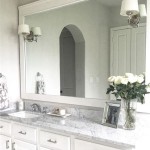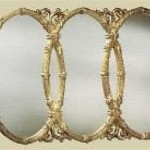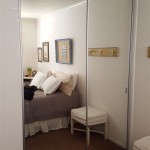Antique Mirror Tray: A Guide to History, Value, and Care
Antique mirror trays represent a fascinating intersection of practicality, artistry, and historical trends. These decorative objects, often crafted with intricate detailing and reflective surfaces, offer a glimpse into past eras and reflect evolving tastes in home décor. This article explores the history, key features, factors influencing value, and proper care techniques associated with antique mirror trays.
The Historical Context of Antique Mirror Trays
The origins of mirror trays can be traced back to the 17th and 18th centuries, a period marked by increased interest in decorative arts and refined household possessions. While silver and pewter trays were common, the introduction of mirrored surfaces added a new dimension of elegance and perceived opulence. Early examples were often associated with serving drinks or displaying perfumes and toiletries, predominantly within aristocratic or affluent households.
The development of glass manufacturing techniques played a crucial role in the evolution of mirror trays. As glass production became more sophisticated, larger and clearer mirrors became available, allowing for the creation of larger and more elaborate trays. The silvering process, which adhered a reflective coating to the glass, also improved over time, contributing to the quality and durability of the mirrored surface.
The 19th century witnessed a surge in the popularity of mirror trays, coinciding with the Victorian era's emphasis on elaborate ornamentation and display. These trays frequently featured intricate frames made of materials such as silver plate, brass, or wood, often adorned with floral motifs, geometric patterns, or neoclassical designs. The use of cut glass and etched detailing further enhanced the visual appeal of these decorative objects.
The 20th century saw continued production of mirror trays, albeit with shifts in design aesthetics reflecting the Art Deco, Mid-Century Modern, and other evolving styles. Materials like Bakelite or chrome became more common, and designs often embraced streamlined forms and geometric patterns. While vintage mirror trays from these periods are collectible, genuine antiques typically predate the 20th century.
Key Features and Characteristics
Identifying and appreciating antique mirror trays requires familiarity with their key features and characteristics, including the materials used, the crafting techniques employed, and the decorative styles prevalent during different historical periods.
Materials: The primary materials include glass for the mirrored surface and a framing material, which can vary widely. Common framing materials include silver, silver plate, brass, copper, wood (including mahogany, walnut, and rosewood), and later, in the 20th century, materials like Bakelite or chrome. The quality and type of these materials are crucial determinants of value and authenticity.
Framing Techniques: The frame's design and construction methods reflect the era in which the tray was made. Hand-tooled silver frames with intricate repoussé work (raised relief designs) are characteristic of earlier pieces, while simpler, machine-made frames are more typical of later production. Wooden frames may feature hand-carved details or elaborate inlays.
Mirror Quality: The condition of the mirrored surface is a significant factor. Antique mirrors often exhibit signs of age, such as spotting, clouding, or minor scratches. These imperfections, while sometimes detracting from value, can also be indicative of authenticity. The presence of black spots or "foxing" is common in older mirrors due to the deterioration of the silvering.
Decorative Elements: The decorative elements on the frame and surrounding the mirror contribute significantly to the tray's overall appeal. These elements can include engraved patterns, etched designs, cut glass details, hand-painted motifs, and applied ornamentation such as cabochons or beaded trim. The style and quality of these embellishments provide clues to the tray's age and origin.
Hallmarks and Maker's Marks: Examining the tray for hallmarks, maker's marks, or signatures is essential for identifying its origin and potential value. Silver trays often bear hallmarks indicating the silver's purity and the maker's identity. Even if the tray is not made of precious metal, a maker's mark can provide valuable clues about its provenance and manufacturing period. These marks can often be found on the underside of the tray or on the rim of the frame.
Shape and Size: Antique mirror trays are found in various shapes and sizes, ranging from small, circular trays designed for perfumes to larger, rectangular trays used for serving drinks or displaying decorative objects. The size and shape of the tray can be indicative of its intended purpose and the stylistic trends of the time. Smaller trays are often more ornate, while larger trays are frequently more functional in design.
Factors Influencing Value and Authenticity
Determining the value and authenticity of an antique mirror tray involves considering several factors, including its age, condition, rarity, provenance, and overall aesthetic appeal.
Age and Period: Generally, older antique mirror trays are more valuable than later ones. Trays dating from the 18th or early 19th centuries are typically considered more desirable than those from the Victorian or 20th-century periods. The age of the tray can often be estimated based on its style, materials, and manufacturing techniques.
Condition: The condition of the tray significantly impacts its value. While some signs of age are acceptable and even expected in antiques, excessive damage, such as severe cracks, chips, or significant silvering loss, can substantially reduce its worth. Restorations, if professionally executed, can improve the tray's appearance, but can also impact its value depending on the extent of the restoration. Pieces in original, well-preserved condition command higher prices.
Rarity: Rare or unusual mirror trays, particularly those with unique designs or made by renowned makers, are highly sought after by collectors. Factors such as the limited production of a particular design or the use of unusual materials can contribute to a tray's rarity and, consequently, its value. Trays associated with historical events or figures also tend to be more valuable.
Provenance: The documented history of ownership, or provenance, of an antique mirror tray can significantly enhance its value. Information about the tray's previous owners, particularly if they were notable individuals or institutions, provides context and increases its desirability. Provenance can be established through historical records, bills of sale, or family histories.
Maker and Craftsmanship: Trays crafted by renowned silversmiths or manufacturers are typically more valuable than those made by unknown or less prestigious makers. The quality of the craftsmanship, including the precision of the detailing and the overall execution of the design, also contributes to the tray's value. Look for hallmarks or maker's marks that can help identify the tray's manufacturer.
Aesthetic Appeal: The overall beauty and visual appeal of the tray play a crucial role in determining its value. Trays with intricate designs, elegant proportions, and harmonious color palettes are generally more desirable to collectors. The aesthetic appeal is subjective, but trays that demonstrate a high level of artistic skill and attention to detail tend to command higher prices.
Authenticity and Identifying Fakes: Determining authenticity is crucial before investing in an antique mirror tray. Red flags include shoddy workmanship, inconsistencies in materials, and the absence of hallmarks or maker's marks. Comparing the tray to documented examples and consulting with an expert can help verify its authenticity. The use of modern materials or techniques on a supposed antique is a clear indication of a fake.
Care and Preservation of Antique Mirror Trays
Proper care and preservation are essential for maintaining the beauty and value of antique mirror trays. Handling them with care, cleaning them gently, and storing them appropriately can help prevent damage and prolong their lifespan.
Handling: Always handle antique mirror trays with clean, dry hands. Avoid touching the mirrored surface directly, as fingerprints and oils can leave marks that are difficult to remove. When lifting the tray, support it from underneath to prevent stress on the frame and mirror.
Cleaning: Clean antique mirror trays gently using a soft, lint-free cloth. For light dust, simply wipe the surface with the cloth. For more stubborn dirt or grime, use a mild soap diluted in warm water. Avoid using harsh chemicals, abrasive cleaners, or scouring pads, as these can damage the mirrored surface or the frame. Ensure the cloth is damp, not wet, to prevent water from seeping into the frame and causing damage. Dry the tray thoroughly after cleaning.
Specific Material Cleaning: The appropriate cleaning method depends on the tray's materials. Silver frames can be cleaned with a silver polish, but be careful to avoid getting the polish on the mirror. Brass frames can be cleaned with a brass cleaner. Wood frames should be dusted regularly and occasionally wiped with a damp cloth. Avoid using excessive amounts of water on wood frames. For Bakelite or chrome frames, use a mild soap and water solution. Always test any cleaning product on a small, inconspicuous area of the tray before applying it to the entire surface.
Storage: When not in use, store antique mirror trays in a safe, dry place away from direct sunlight and extreme temperatures. Exposure to sunlight can cause the silvering to fade or deteriorate, while extreme temperatures can damage the frame. Wrap the tray in acid-free tissue paper or a soft cloth to protect it from scratches and dust. Avoid stacking other items on top of the tray, as this can put pressure on the mirrored surface and cause it to crack.
Repairing Damage: For significant damage, such as cracks in the mirror or broken frames, consult with a professional restorer. Attempting to repair the tray yourself can cause further damage and decrease its value. A skilled restorer can repair the damage while preserving the tray's original appearance and integrity. When selecting a restorer, choose someone with experience working with antique mirror trays and who uses appropriate materials and techniques.
Preventive Measures: To prevent damage, consider placing felt pads on the bottom of the tray to protect surfaces from scratches. Avoid using the tray to hold heavy or sharp objects, as these can damage the mirrored surface or the frame. Be especially careful when handling the tray around liquids, as spills can damage the mirror's silvering or the frame's finish.

Vintage Mirror Tray 2 Colors And Shapes Available Apollobox

Pin On Cosas Para Comprar

Branches Pattern Antique Mirror Rectangular Tray

Vintage Oval Mirror Tray Brass Filigree Ornate Vanity

Mirrored Vanity Tray Vintage Mirror Decorative With Handles Serving For Display Perfume Dressering Table Storage Bathroom Retro Com

Baroque Vintage Mirror Tray

Vintage Dresser Trays Mirror Tray Rectangle Brass Metal Vanity Hall Of Mirrors

Antique Brass Mirror Trays West Elm

Mid Century Vanity Mirror Tray Duckwells

How To Paint A Vintage Vanity Mirror Tray








